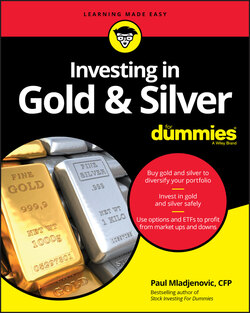Читать книгу Investing in Gold & Silver For Dummies - Paul Mladjenovic, Paul Mladjenovic, Ted Sudol - Страница 41
THE VALUE OF GOLD IN RECENT HISTORY
ОглавлениеA good example of the value of, say, gold or silver is when we discuss inflation risk. Throughout history, when inflation raged in an economy (such as Venezuela from 2015 to 2020 or Yugoslavia during 1993–1994), gold and silver held their value while currencies were rapidly losing their value in terms of buying goods and services. Those citizens were able to trade using gold and silver to exchange with goods and services and get that same basket of goods and services when, in terms of the currency, the price was skyrocketing.
Take Zimbabwe during its hyperinflation in 2006–2007. A roll of toilet paper skyrocketed to a price of $145,750. Meanwhile, that same roll of toilet paper was selling for $0.69 in the U.S., and a single ounce of gold could have literally bought a truckload of toilet paper (I guess that gives an entrepreneur a great opportunity to sell toilet paper at a nice profit in Zimbabwe).
In the 1950s, you could have bought a nice man’s wool suit for about $30. However, that same equivalent suit would cost you about $1,000 in 2020. In that case, an ounce of gold in each case would have helped you acquire that same suit with money to spare (in case you also want to buy a pallet of toilet paper!).
At the time of writing this book, the Federal Reserve had printed nearly $10 trillion in dollars in an attempt to mitigate the financial and economic crisis stemming from the global pandemic hitting the U.S. economy in spring 2020. Given that, the risks of inflation increased, which, in turn, give gold and stock investors another reason to add those shiny metals to their portfolio.
